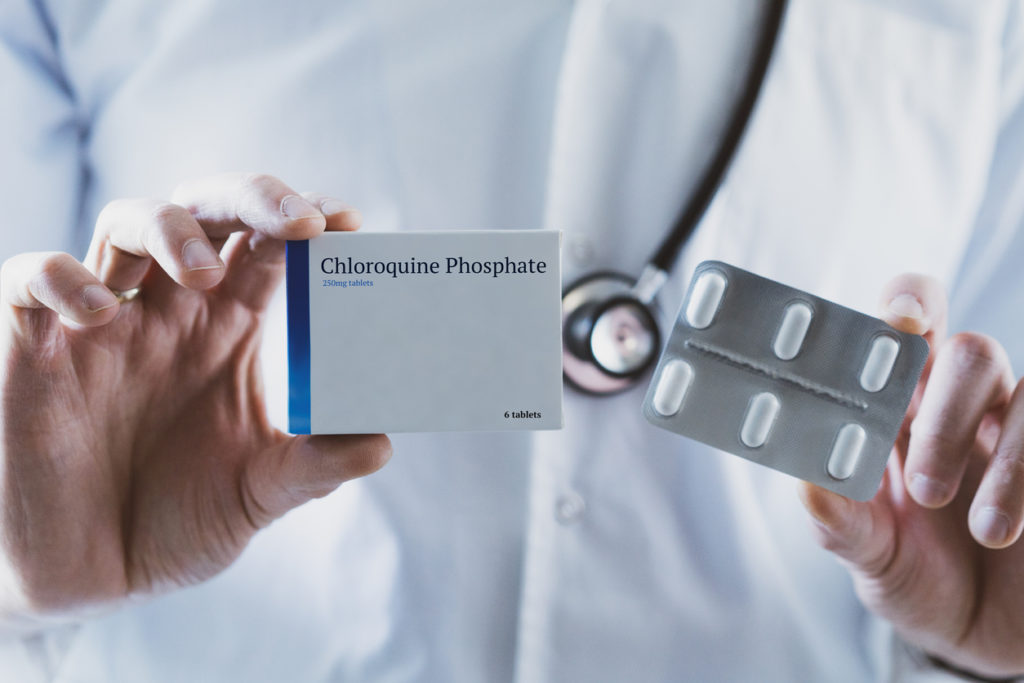The recent commotion over chloroquine and hydroxychloroquine as possible therapies for COVID-19 has led some to mistakenly believe that quinine has all the same therapeutic properties and to suggest that people fight the virus with stock quinine.
This is wrong; despite a related historic origin and names that sound similar to some, these are very different molecules and there is no direct evidence that quinine does anything for COVID-19.
Chloroquine and hydroxychloroquine show promise
Chloroquine and hydroxychloroquine are both used as antimalarials and for some autoimmune conditions, and there is significant promise that both may work against COVID-19. We reported on the first case reports all the way back in early February, and also reported that chloroquine appears to work by altering the chemistry of the cell surface, rather than by a direct molecular mechanism against SARS-CoV-2.
In the time since those initial reports, additional evidence has piled up, including more in-vitro studies, more case reports, and a non-randomized clinical trial from China with some striking results.
In the Chinese trial, all patients treated with chloroquine and azithromycin went PCR-negative within seven days, while most in the non-randomized control group were still positive. However, these results were based on an as-treated population rather than an intent-to-treat population, one factor that may bias the results. In addition, persistent rumors have circulated that randomized trials, which are expected to conclude in April, will show that these drugs are at least somewhat effective in saving the lives and shortening the course of serious COVID-19 cases.
While the non-randomized trial results cannot be regarded as definitive, and randomized results can only be attained by running trials and waiting for their results to properly read out, it’s now reasonable to believe that these antimalarial therapies might be somewhat effective against COVID-19.
For this reason, medical authorities in certain countries like Korea and Japan facing many COVID-19 cases have been authorizing limited use of chloroquine and hydroxychloroquine in serious COVID-19 cases, in the form of 500mg chloroquine or 400mg hydroxychloroquine tablets by mouth once daily. Reports from China say that the Chinese government is already moving to make this therapy a standard of care.
Medical authorities in the USA have been more cautious, recommending that physicians wait for trial results before prescribing chloroquine analogues for COVID-19. Nonetheless, according to the CDC, some physicians in the USA have used chloroquine analogues to treat life-threatening cases of COVID-19.
Don’t jump the gun
Some people just aren’t ready to wait for the medical research system to take its course, and the results have already been deadly. In addition to a series of hospitalizations for chloroquine overdoses from improper use in Nigeria, a couple in an unspecified US state died after taking chloroquine phosphate intended for use in fish tanks. It’s unclear if the deaths were an adverse drug reaction, an overdose, or the result of contamination, or if the couple even had COVID-19. Needless to say, no one should be doing what these people have been doing.
The president has also been enthusiastic about these drugs, especially on Twitter. This may have been a factor in the casing chloroquine and hydroxychloroquine to sell out of some channels.
That sold-out status won’t last long, thankfully, because unless we see tens to hundreds of millions of cases, and possibly even then, global supplies will be enough to meet global demand. Millions of people take chloroquine for malaria daily, and Bayer and Sanofi have already stepped up with five million tablets. Teva and Mylan have both announced they are already ramping up production.
It is very important to understand something about these drugs: If they work, they will be effective in treating the infection among patients who already have COVID-19 and are in real need of treatment. This treatment might reduce the death rate, and it might also reduce demand and increase the turnover for ventilators and ICU beds. However, it will not prevent people from contracting the disease in the vast majority of cases, because the vast majority of infections occur from noncritical cases, before patients become critical, and mostly even before they are symptomatic.
Nor will these drugs likely be necessary in the mild cases which make up the majority of COVID-19 infections. They probably won’t even be used in these cases unless supplies are truly ample. Even if they work as well as the most optimistic reports suggest, and become available quickly in global quantity, they will only help, and will not end the pandemic by themselves.
The Prepared recommends that readers actively follow the news about chloroquine and related drugs.
Quinine, on the other hand, should be stockpiled, but only for the purpose of drinking with gin and lemon over ice.


You are reporting the comment """ by on